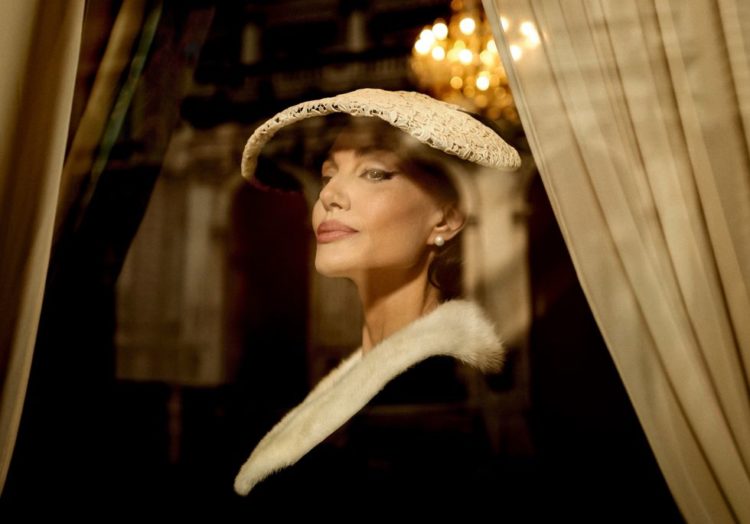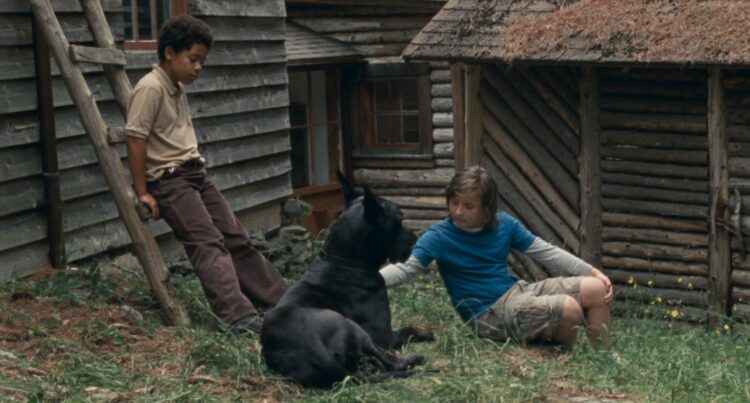

After the detour of El Conde, Pablo Larraín returns with a study of opera singer Maria Callas, thus closing out a triptych of films on glamorous women, gilded isolation, and lingering death that began with Jackie in 2016 and continued via Spencer five years later. Maria stars Angelina Jolie, back with her meatiest performance in years as a prodigal artist whose gifts began to fade long before they should have. Working again from a script by Spencer‘s Steven Knight, the film imagines Callas’ final days in Paris leading up to her death in 1977, then just 53 years old. Using a fictional filmmaker (Kodi Smit-McPhee) to structure the story, Larraín skips back and forth: we see the singer’s early years (moving from New York to Athens on the eve of WWII), experience some iconic performances, and learn of her romantic regrets. This includes two separate occasions when Jackie Kennedy came into her orbit––though, alas, no cameo from Natalie Portman. Some universes just aren’t made to be expanded.
In a way, that relationship allows Larraín’s trilogy to come full-circle, but the film is more concerned with the mark it left on Callas’ life. Maria posits that the singer’s decision to retreat from the stage, and the resulting decline in her abilities, were directly influenced by a love affair she began with Aristotle Onassis (played with relish here by Haluk Bilginer) in the 1950s––ending when he left her for Jackie in ’65. In the aftermath (and to the delight of her fans) Callas made a comeback, some of which we see in Maria, but was never able to reach the same heights. Larraín and Knight’s film thus draws her as a tragic figure wiling away her days popping pulls in her decadent Parisian apartment, performing arias to the delight of her housekeeper (Alba Rohrwacher), and fussing over where to get her trusty valet (Pierfrancesco Favino) to place the grand piano.
Despite changing DPs on each project, Larraín’s trilogy has maintained a consistent visual language. On camera duty this time is the great Ed Lachman, continuing where Stéphane Fontaine and Claire Mathon left off: washed-out colors for the present, black-and-white for the flashbacks (including some alluring sequences on Onassis’ Christina O yacht, the same vessel used in Triangle of Sadness). What the film lacks, strangely enough, is a compelling score. There is no Mica Levi or Johnny Greenwood to pluck the strings this time around, and while It would be easy to compare Maria‘s mise-en-scène to the encroaching interiors that made Spencer and Jackie so claustrophobic, Maria (easily the most conventional biopic of the trio) is more notable for how spacious it feels.
Larraín keeps much of the film quiet, and as a result Maria can feel a little empty: a conceptual touch, perhaps, but one that leaves Knight’s script and Jolie’s performance (presence to burn, a bit limited for interiority) with a lot of heavy-lifting. There are raucous reminders of Callas’ most beloved performances, but the sequences are presented sans context and disappear without leaving much mark. This all proves tricky for a film with an otherwise-bad case of tell, don’t show; and while it’s easy to forgive some clunkier readings (“Maria Callas is never late, everyone else is too early” does little to bolster the legend) the decision to skirt over the singer’s radical weight loss in the 1950s (the real reason, some argue, that she lost her edge) suggests an oversight.
And still, as with anything Larraín, there are plenty of reasons to see this film. Just wait for the gorgeous autumnal street scenes, the stilted warmth in Rohrwacher’s performance, and, best of all, the scenes when Jolie and Bilginer get to spar––if you sat through all three hours of Winter Sleep you will know that is not a job to be taken lightly. Maria is a story that mourns a career that ended too soon, but in Jolie’s case it offers a restart.
Maria premiered at the Venice Film Festival and will be released by Netflix.
The post Venice Review: Pablo Larraín’s Sparse But Admirable Maria Paints a Tragic Portrait first appeared on The Film Stage.



